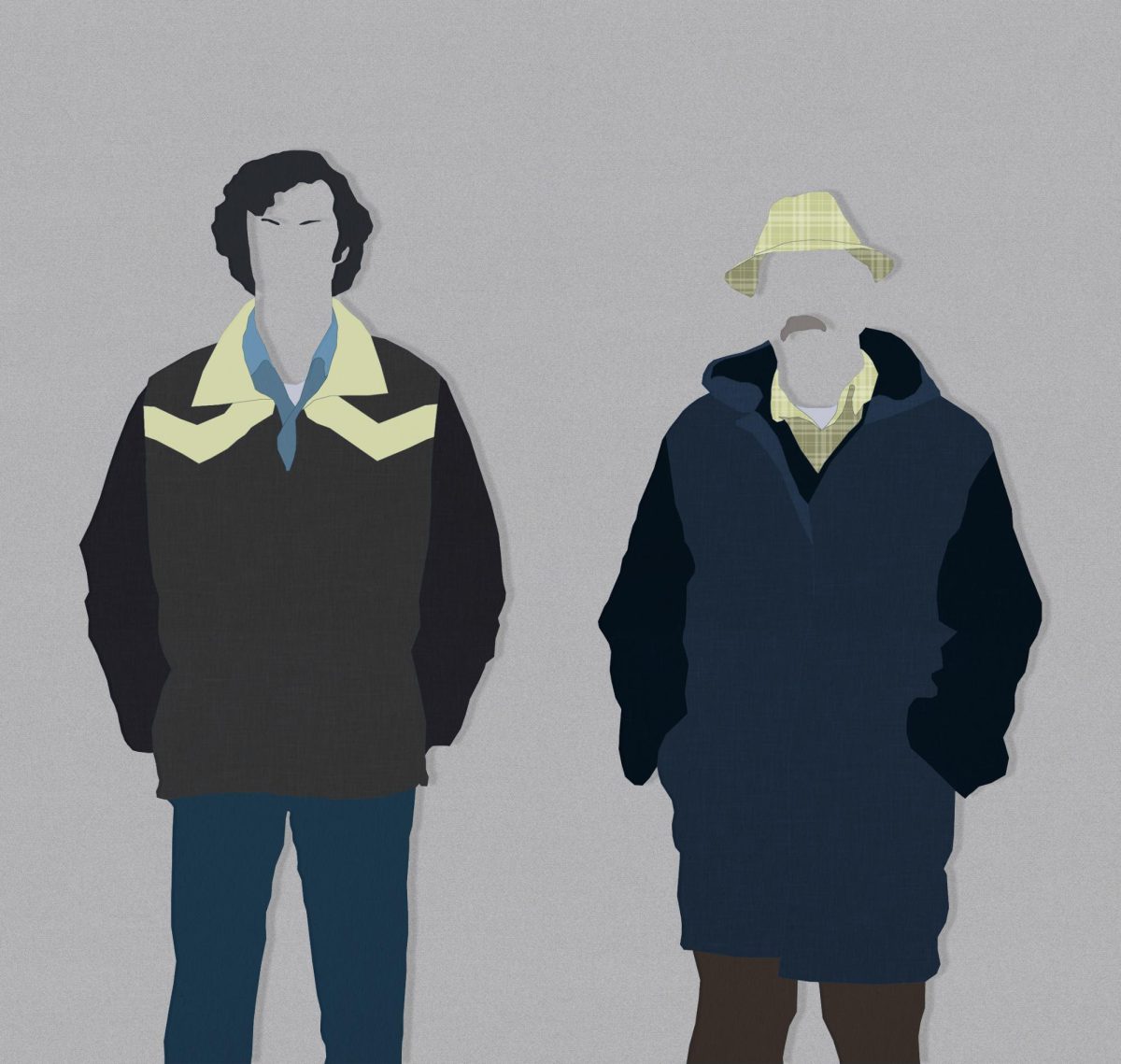On the last day of Thanksgiving break, I spent the first hour of the afternoon putting up holiday decorations with my family. Rummaging through old boxes just descended from the attic, I came across the old snow globe, the one that always prompts my sister to exclaim, “I remember that one!” The falling of its flakes and the chiming of its melody made softer by time, its surprising weightiness remains, even in my larger hands. Inside, a girl and boy bearing some resemblance to my sister and me sled down a hill — enclosed in their faded, fragile world, they call you towards them in examination at the same time as they stay away, irretrievable in the past.
“The Holdovers,” Alexander Payne’s newest film, is an artifact of a similar kind. Set somewhere in New England in 1971 and shot as if in that year, it centers on a curmudgeonly ancient civilizations teacher at an all-boys prep school named Paul Hunham, who is played by the superb Paul Giamatti. Against the “hormonal vulgarians” he wages his own little Punic War, setting out to instill in them discipline, academic integrity and an awareness of their privilege.
Apparently, it is his year to watch over five such reprobates over Christmas break, including the caustic, Holden Caulfield-esque Angus Tully, whose mother cast him off as she headed to honeymoon with her new husband on Saint Kitts. Tully, played by newcomer Dominic Sessa, is stranded once again when, in a Christmas miracle/deus ex machina, one boy’s father picks up everyone else in a helicopter. And then there were three … the third being the school cook Mary, played by Da’Vine Joy Randolph. With the petulant, strong-willed personalities present, the next two-ish hours of the movie could easily have been a horror show; instead, Payne crafted a narrative that sparks and crackles like a fire that warms, not burns.
On one hand, the film is as vibrant as such a fire, filled with Sessa’s adolescent astuteness and Randolph’s many flavors of sass. Angus’ antics, which result in an emergency trip to the hospital and eventually a “field trip” to Boston, drive the action and lead to a metaphorical melting of the ice.
On the other hand, the film is muted, wrapped in corduroy and cashmere and colored in yellow tones. The characters come to see each other only gradually, a reveal that is occluded, at least initially, by Mr. Hunham’s one functioning eye. Each member of the trio deals with a personal sorrow that has further dredged out that unbridgeable divide between all people. For Mary, it is the death of her son, a recent graduate of the school, in the Vietnam War. For Angus and Mr. Hunham, I don’t want to spoil anything.
Payne resists the surrogate father and mother trope here, though he approaches it and makes viewers long for it — Mary’s name, given the film’s Christmastime setting, is even on the nose. There are scenes when the trio lounges on school couches late at night — Mr. Hunham sipping on Jim Beam while reading, Mary watching reruns of “The Newlywed Game” and Angus doing various moody teen things — that we get the sense of an unlikely family being born before our eyes. But for most of the movie, what we see are three lonely worlds that rotate around each other, approaching each other before moving apart again, all within the larger, snowy world that is winter in rural New England.
Though there is plenty of conflict and dialogue, which is well-written and often hilarious, this is not what governs the movements among characters. With “The Holdovers,” Payne has done the work of an ancient civilization teacher, which is to say, to bring to life something that was lost to time. He revived a certain cinematic tradition, especially among holiday movies: a simple, un-comic-book-ified narrative that depends on the exquisite tonal sensitivity of the actors.
The film works because its writers allotted each actor plenty of psychological wilderness to explore and trusted them in the balancing act of the comic and the tragic, which sometimes occurs even in a single line. Mary — who easily could have been reduced to her race or otherwise sanctified, her grief wrapped up like a Christmas present — is made robust, and yet delicate, by Randolph’s masterful interpretation. When she drops out of the film’s action for half an hour around what would be the third act, her presence on screen is missed. Giamatti too could have fallen into an archetype — the sour, worn-out academic — and although he leans into Mr. Hunham’s pointed pedagogery, he also gleefully accepts the character’s vulnerabilities. With Sessa, I hope that what I witnessed was the birth of a star: his performance is grounded, alert and full of restrained emotion, the last being something of a feat for young actors.
By the end of the film, I determined that “The Holdovers” is a cross between “Harold and Maude,” “Dead Poets Society” and “It’s a Wonderful Life” in both style and story. It’s a holiday movie but not explicitly so, which I hope will make it endure longer in the public consciousness. Its classic-ness, ironically, is what makes it surprising and vital, like a gust of winter air, a fragment of Greek pottery or the weight of a snow globe just rediscovered.




Leave a Comment